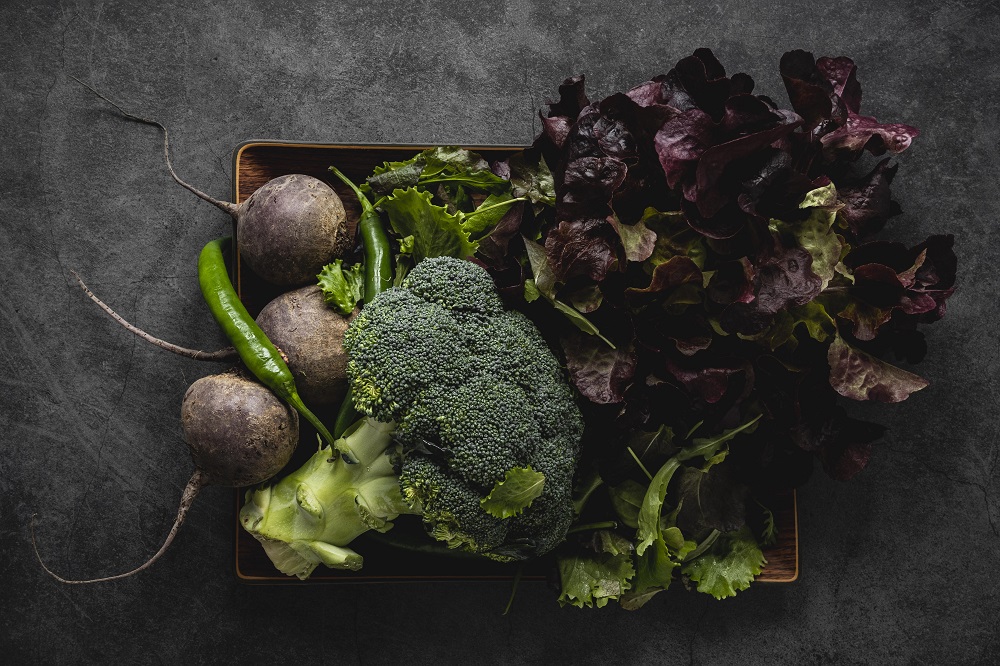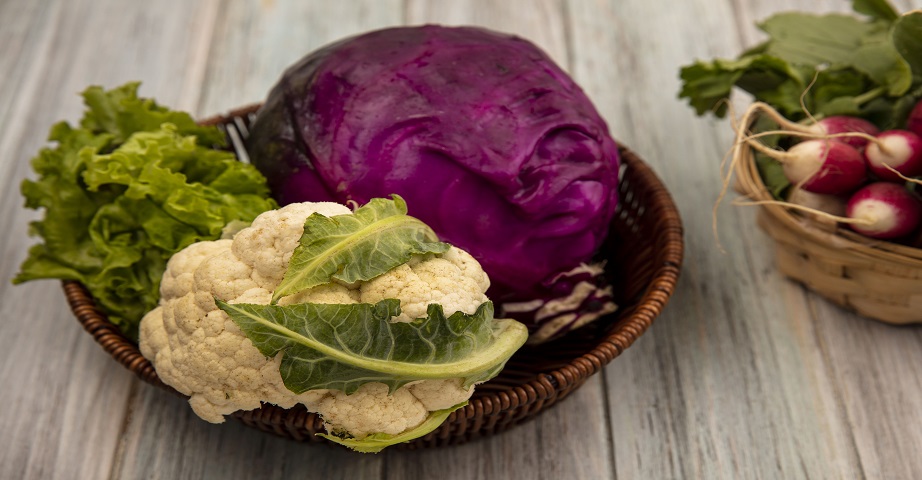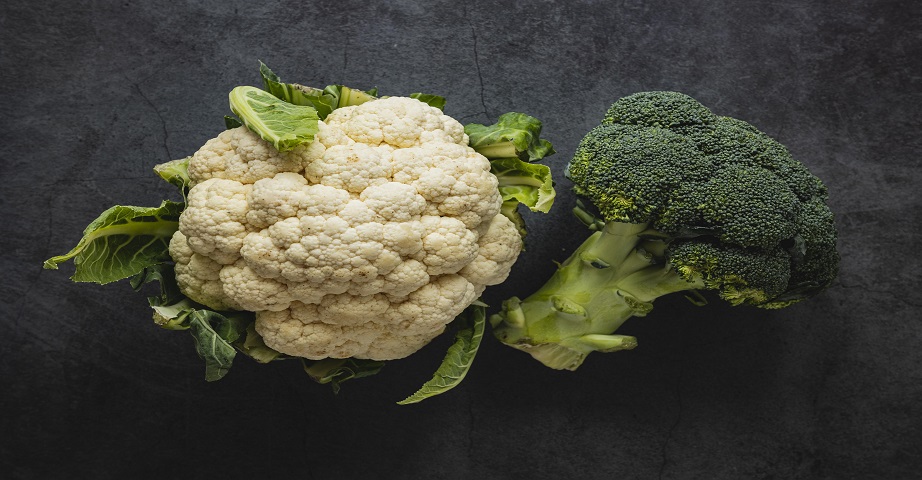Goitrogens - the effect of anti-nutrients substances on the body

Goitrogens are anti-nutritional substances that limit or hinder the body's use of valuable ingredients, supplied to the body along with the daily menu. These are compounds conducive to the formation of goiter, which occur naturally in food, and their excessive supply can contribute to the disruption of iodine absorption by the thyroid gland. What are goitrogens and in what products can they be found? How do goitrogenic substances affect the human body and how to reduce their content in foods?
What are goitrogens?
Goitrogens are anti-nutritional substances of organic and inorganic origin, which occur naturally in food and contribute to the disruption of iodine metabolism - a chemical element classified as a micronutrient, which is necessary in the synthesis of thyroid hormones.
If the daily diet provides the human body with too many goitrogens, there may be a disruption in the production and secretion of hormones by the thyroid gland, and thus the disability of thyroid function and the work of the whole body.
Goitrogens in food - where do they occur?
The goitrogens are found in foods of plant origin, and the main source of the compounds are considered cruciferous vegetables, although goitrogenic substances can also be found in other vegetables, legumes or peanuts. Thus, the goitrogens occur primarily in products such as:
- kale,
- cauliflower,
- brussels sprouts,
- kohlrabi,
- cabbage,
- radish,
- spinach,
- swede,
- turnip.
Types of goitrogenic substances
There are many goitrogenic substances found naturally in nature that affect the functioning of the thyroid gland and the metabolism of the hormone. The goitrogens include, among others:
- Thioglycosides, also known as glucosinolates, which are compounds that contain S-glycoside bond and are distinguished by the strongest goitrogenic effect. They are found in cabbage, Brussels sprouts, cauliflower or broccoli.
- Cyanogenic glycosides, whose effect is associated with the formation of thiocyanate ions during the detoxification of cyanides in the human body. The cyanogenic glycosides are found in cassava, bamboo shoots, as well as seeds of stone fruits such as pears or apricots.
- Hemagglutinins, or glycoproteins, which have an affinity for cell membranes and thus contribute to the reduction of intestinal absorption of iodine. The hemagglutinins, also called lectins, can also interfere with the resorption of thyroxine, a compound that is one of the basic hormones produced by the thyroid gland. The main sources of the hemagglutinins are soy and beans.
- Polyphenols, or compounds commonly recognized as beneficial components of the daily diet, which can react with iodine and interfere with the synthesis of thyroxine. The polyphenols can be found in fruits, vegetables, as well as peanuts or legumes.

Effect of goitrogens on the human body
The goitrogens are substances that reduce the absorption of iodine from food or interfere with the absorption of the element by the thyroid gland, which contributes to the disruption of the production of hormones - thyroxine and triiodothyronine. The adverse effect of the goitrogenic substances is due to the ability to bind iodine, which preclude the proper incorporation of the compound into thyroxine molecules and conversion to triiodothyronine. The pituitary gland, in response to a decrease in the concentration of hormones produced by the thyroid gland, increases the level of thyrotropin, known as TSH, which contributes to excessive growth of thyroid tissue, the development of hypothyroidism and the formation of the so-called goiter. In addition, in products containing goitrogenic substances, you can also find an enzyme - thioglucosidase, which is responsible for the breakdown of thioglycosides into thiocyanines and is released as a result of crushing, grinding or chewing food.
The negative effects of the goitrogenic substances may be the stronger, the lower the supply of iodine in the daily diet. Thyroid dysfunction may contribute to the dysfunction of metabolism in the body and negatively affect the work of the whole system.
Who should avoid goitrogens?
People who are struggling with thyroid conditions, such as hypothyroidism or Hashimoto's disease, should consider limiting the participation in the daily menu of products rich in the goitrogens. However, you should not completely give up cruciferous vegetables or other sources of the goitrogenic substances that, although contain anti-nutrients, are also a source of many valuable compounds. When preparing products rich in the goitrogens, you should pay attention to appropriate thermal treatment, and in the daily diet, you should be included iodine-rich products, which can minimize the risk of adverse health consequences.

How to reduce the content of goitrogens in food?
The main source of the goitrogens are cruciferous vegetables - cabbage, Brussels sprouts, broccoli or cauliflower. However, this does not mean that people struggling with thyroid disorders should completely resign foods that also contain a wealth of valuable vitamins and minerals. It is enough to use appropriate technological treatment to reduce the content of undesirable anti-nutrients substances in food. According to the data, uncovered cooking can reduce the content of the goitrogens in food by up to 30%. Methods that are also worth using to reduce the concentration of the goitrogenic substances in food are treatments such as soaking, freezing or pickling. It is also important to include iodine-containing products in the daily diet, which can have a positive effect on the work of the body.
Bibliography:
- https://pubmed.ncbi.nlm.nih.gov/32987890/
- https://www.sciencedirect.com/science/article/pii/S1756464622000081
- https://www.taylorfrancis.com/chapters/edit/10.1201/9781003178446-6/goitrogens-sabeera-muzzaffar-tuyiba-nazir-mohd-munaff-bhat-idrees-ahmad-wani-masoodi
- https://pubmed.ncbi.nlm.nih.gov/8675242/
- https://pdfs.semanticscholar.org/14fb/87d296a0ae51f59dbecd4d8e224144c485f7.pdf

